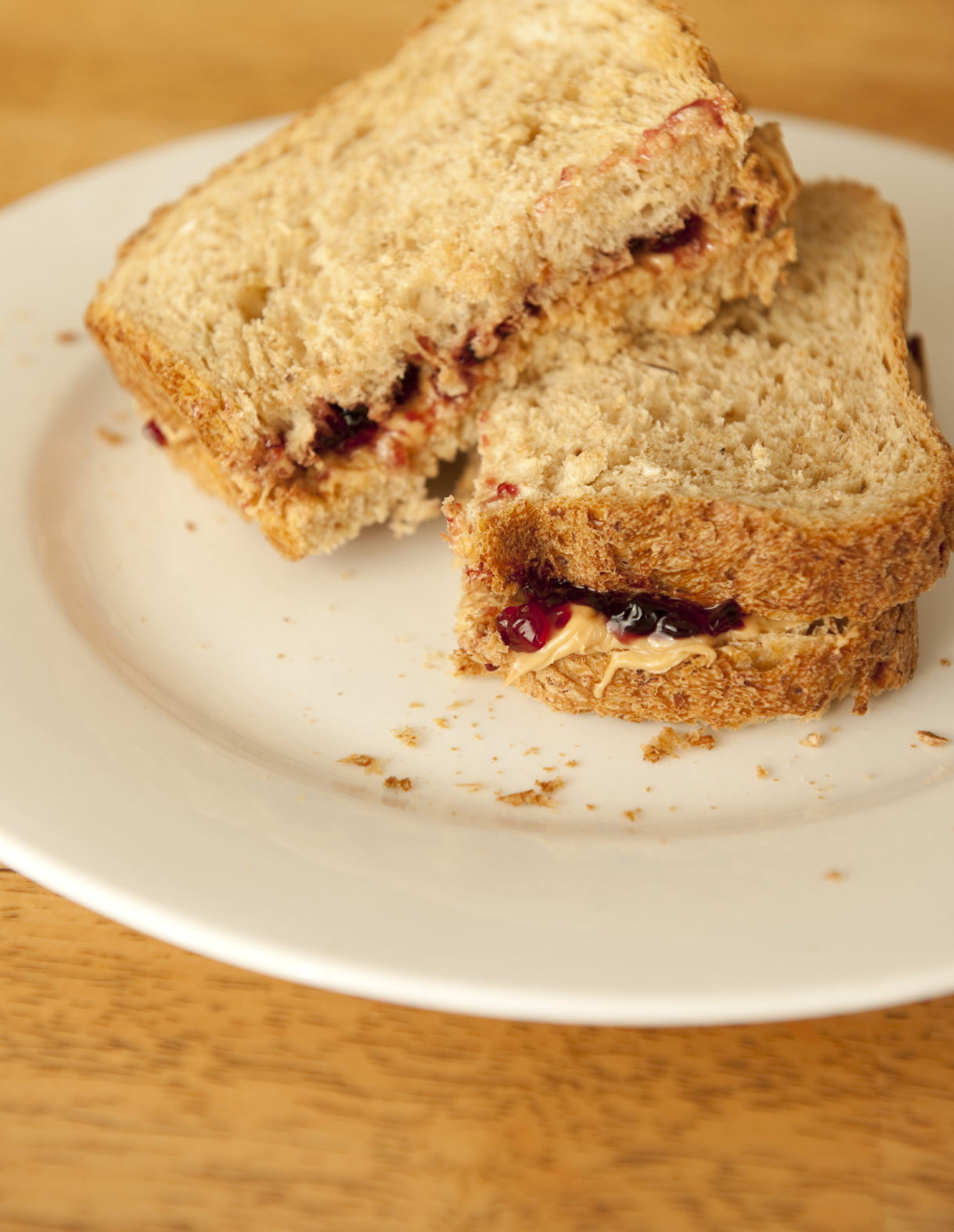 It would be fair to say that I have strong opinions about sandwiches.
It would be fair to say that I have strong opinions about sandwiches.
These opinions have their origins in my youth, when my lunches were spent blissfully eating peanut butter and jelly with Mike-Sells potato chips wedged between the slices of bread. This was perfect happiness and a fine reward to having completed another morning of kindergarten. Eventually I moved on to peanut butter and bacon sandwiches (because I hated tomatoes) and then, perhaps even more wonderfully, on to grilled peanut butter and jelly sandwiches (because I hated cheese).
Somewhere along the line, my Dad decided that baking bread was a worthwhile endeavor, and he began producing large loaves of whole wheat bread. To my present-day self, this would be heaven. To my 10-year old self, this was paramount to torture: his hearty bread, slightly crumbly, thickly sliced, and spread with natural peanut butter (which arrived on the scene about the same time as the bread), was nothing like the pb&j of my earlier years. It was around this time I began to long for “Roman Meal” bread, tender and squishy, with virtually no flavor. Battles ensued.
In college, I discovered the wonders of melted cheese. A pita split in half and toasted with several slices of cheese was an excellent container for a salad of greens, onions, sunflower seeds, green peas, and raisins. I must have eaten hundreds of these sandwiches.
In my twenties, and the era of low-fat cooking, my sandwiches suffered miserably. No more cheese, no more mayo, plenty of smoked turkey. I remember making sandwiches for me and my boyfriend — his with all the good stuff, mine without. I always had to eat a couple bites of his; sometimes I even took those bites before serving it to him. I can’t say those are my prouder moments. But I did begin to understand what makes a sandwich satisfying, and what doesn’t. It actually needn’t be richness, but in lieu of it, there must be flavor, texture, variety.
Today I had a hankering for a sandwich and went to my neighborhood deli for lunch. This deli makes excellent food by and large — meatloaf, vegetable lasagna, roasted beets (all delicious and interesting) — and I’ve been known to get a pretty good sandwich there. After a long wait, which led me to hope that my sandwich had been made with meticulous care, it arrived in my hands, still warm from toasting (to melt the cheese), and slightly damp (where the coleslaw was oozing out): all excellent harbingers of good eating ahead. The minute I opened it, the problems began. It hadn’t been cut all the way through, so when I tried to pick up half of it, the bread tore — off BOTH halves, somehow, bringing the filling with it. How this small error could so destroy the sandwich confounds me, but I could no longer even pick my sandwich up; great chunks of chicken, masses of coleslaw, slices of tomato — all slid out of the torn bread and could not be contained. Mustard was spread thickly enough that it had soaked holes in the bread. I could see melted cheese oozing off the sandwich in one long strand (now sitting on the butcher paper), but nowhere else on the sandwich, so it provided no proverbial glue to hold the ingredients together. I slid this mess on to a plate and got out a fork and knife.
This got me thinking about what makes a sandwich so perfect a meal. Key to its rewards: you hold it in your hands. The satisfaction that comes from this attribute of sandwich-eating is elusive in its source; perhaps it’s just in our DNA to enjoy eating with our hands. Also key: a bit of something in every bite. Crunchy vegetables; sharp pickles or peperoncini; unctuousness from mayo, avocado, hummus; juiciness of tomatoes, and then the deep savoriness of meat. Both of these essentials were no longer possible with my lunch sandwich, though it was a generous sandwich full of good things. This sandwich-maker meant well but overdid it, by being too generous, or else destroyed her success by disregarding the important final detail of a good clean cut. As is true of so many things in cooking, details do matter.
I understand now that the success of my youthful sandwiches boils down to one common factor: I made them. Since the age of 5, I have been in charge of my own sandwiches. I don’t say this with arrogance, but with illumination. I made the sandwich that I wanted to eat, and so they satisfied. A sandwich made by someone who doesn’t care about The Sandwich will inevitably fail. If you happen to be such a person, I offer you a few thoughts:
1) The bread should be either very fresh or toasted.
2) The spreads should cover the entire surface of the bread in a thin layer, and both slices need it — mustard, mayo, pesto, a little salad dressing, tomato sauce, hummus, gravy, smashed avocado — whatever you like.
3) Tomatoes, if using, taste best when they are next to mayonnaise or your spread of choice. Salting the tomatoes is another good idea.
4) A generous grinding of black pepper can only make things better.
5) Pickles and other juicy ingredients come next.
6) Meat should not be in a thick wad in the center of the bread. Whoever decided this was the way to make a sandwich has obviously never eaten one or is a master of advertising, since this produces a thick, voluptuous sandwich that nearly screams “Gotcha, sucker!” when the first bite reveals nothing but a moat of bread around a lump of meat.
7) Cheese should be cut to match the eater’s passion for cheese. I like mine thinly sliced, but many others want a formidable wedge. Consider your eater, and slice accordingly.
My Dad has long been an admirer of the sandwich, and sometimes eats two a day — one for breakfast, and another for lunch. I wonder what he thinks about my guidelines; his personal ones may differ. Visiting my parents always promises some good sandwiches, because their fridge is stocked with excellent fixings: several kinds of lunch meat or leftover grilled chicken, pork or steak (they grill nearly year-round); several kinds of cheese and varieties of bread; plenty of mayo and copious mustards; and any kind of pickle your heart desires. Essential for Dad is a good slice of onion, and plenty of black pepper. A glass of cold beer doesn’t hurt either.


Recent Comments